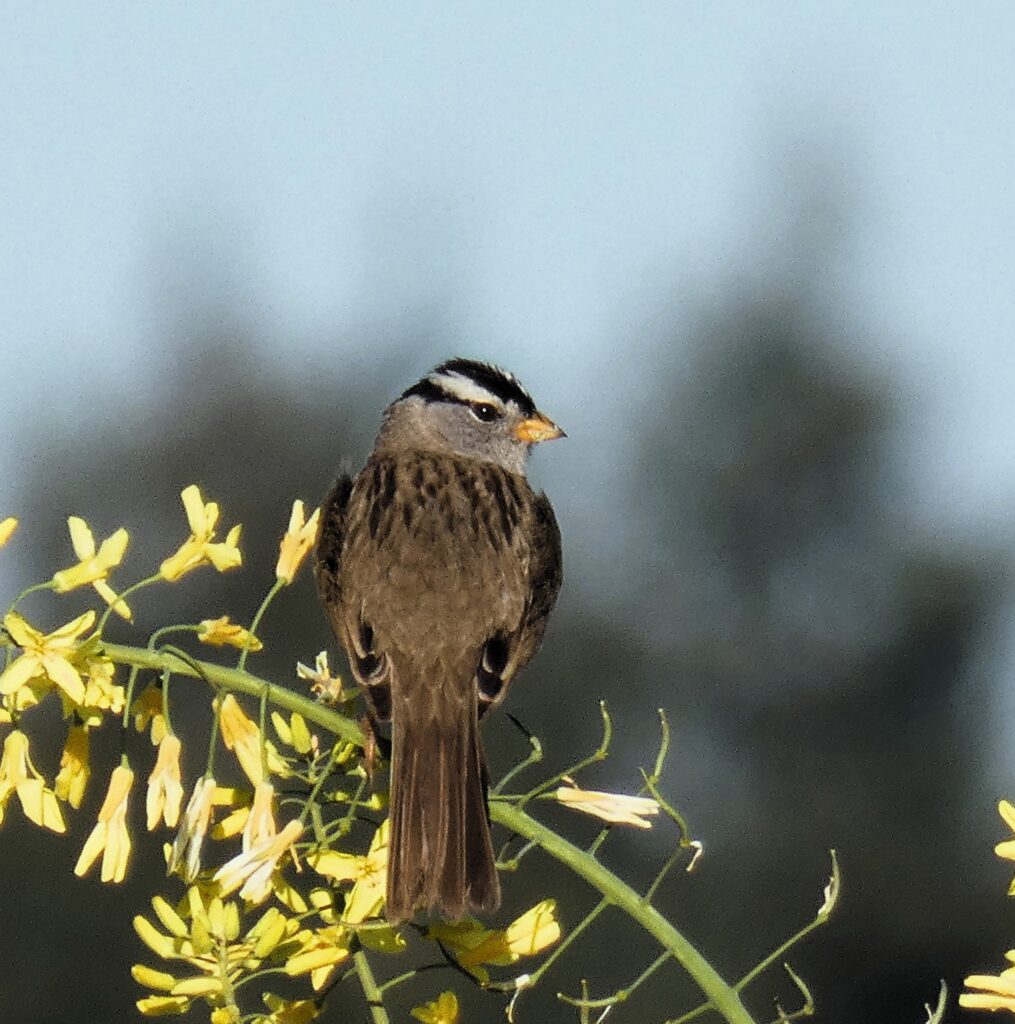By Ed Swan
Ed Swan, a master ornithologist with an incredible depth of knowledge and a generous enthusiasm to share it, inspired many Islanders to learn about birds. His column, “Don’t Forget the Birds” appeared for years in The Vashon Loop. Ed passed away on Oct. 28, 2022.
With birds returning from their migrations, and springtime inspiring both our seasonal and year-round residents into song and activity, we reprint this article. Thank you, Ed, for sharing your devotion for the birds with our Island. We miss you! This article was originally printed in The Vashon Loop, Volume 6, No. 7, April 3, 2009.
As I heard white-crowned sparrows begin to sing on territory in the last week of March in the Chautauqua Elementary School parking lot, I thought about what I learned recently reading “The Migratory Ecology of Birds” by Ian Newton. This great book reviews the history of what humans discovered over the last two centuries about bird migration, and summarizes all that is known on the biology of birds and migration in a very exhaustive but readable way.
Ornithologists often use white-crowned sparrows as study subjects for migration research because they provide a common bird that is easily caught and banded, and is spread across the continent. These sparrows star in projects illuminating migratory preparation, cues to starting migration, and path-finding to locations. For example, several studies looked at body mass changes pre-migration of white-crowns in California. Birds store up on fats before migration because, in birds, fats per unit of weight provide 7-9 times more energy than protein or carbohydrates.
Some birds repeatedly caught over several days gained as much as 20% of their body weight in a day. Their behavior changed from the usual morning and just-before-sunset foraging peaks to feeding all day long. With the start of migration, birds ceased eating by afternoon, to have time to purge their systems prior to a night of flight.
Other studies involved displacing white-crowned sparrows thousands of kilometers from their wintering grounds. Researchers took 411 sparrows from winter quarters in San Jose, California to Baton Rouge, Louisiana, and 26 returned to be captured again in San Jose the following winter – 21% of the 123 that would be expected to survive and return without movement off their usual path.
That displacement, along with other studies, shows that white-crowned sparrows utilize both the stars as a compass and the Earth’s magnetic field to determine latitude. Use of the magnetic field proves useful for species when clouds block the sky. White-crowned sparrows appear especially sensitive to magnetic fields and appear able to find quite specific locations with that sense. As the time of migration approaches, White-crowned sparrows display “migratory restlessness,” fluttering their wings and pointing their bill up to the night sky. In the displacement studies, older birds with a longer time to obtain a magnetic sense of location, and a memory of the night sky, showed a higher probability of returning to the original wintering grounds.
White-crowned sparrows, like our wintering fox sparrows and several other species with many different wintering populations, have a leap-frog migrating pattern. The birds breeding at higher northern latitudes “leap over” other populations of the same species to winter the farthest south. Those with the shortest distance north to fly leave first, since spring will warm up and prepare their nesting areas for habitation before those of birds utilizing areas farther north. For example, western populations of the Gambel’s white-crowned sparrow breed in Alaska and northern Canada and migrate south to southern California, Arizona, New Mexico, and Texas. Our local Puget Sound white-crowned sub-species goes only down to western Oregon and as far as Berkeley in northern California to winter.


